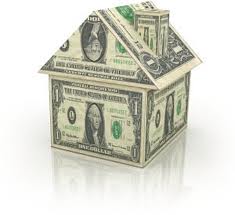
The Real Estate market is getting hot again in the U.S., however, this time, the market dynamics are distinctly different from that of the last peak. Why? This time, a key demand side factor is investors, yes, many investors are pushing the housing prices higher, in many locations.
However, of the many real estate investors, few know how to properly evaluate and calculate their real estate investment's returns. How about let's start with a simple and common measurement in RE investment - Cap rate.
What is Cap Rate?
In short, Cap Rate = annual net operating income / cost (or value) of the investment
Why Use Cap Rate?
Many real estate investors believe that when evaluating real estate investment opportunities, the first question they should ask is - what are the cash flows of the deals?
Wrong!
Why cash flow is the wrong question to ask? Because two different investors might approach the same opportunity with two different financing methods.
The cap rate, however, measures a RE investment opportunity's potential returns, independent of the buyer's financing method.
How to Calculate Cap Rate?
Let's use an example to illustrate:
Example 1.
You bought a house for $200K cash, rental is $1,500 per month, there are no other expenses. How much is your cap rate?
Your annual operating income = $1500*12 = $18000
Your cost = $200000
Cap rate = 18000/200000 = 9%
Now you think it's easy to calculate cap rate? Let's try example 2.
Example 2.
You bought a house for $200K with 20% down and borrowed the rest 80% at 5% annual interest rate. The rest conditions are the same as in Example 1. What's your cap rate now?
Cap rate will be the same in this case, because neither annual net operating income nor the cost of this investment changes.
What changes is your actual rate of return, thanks to the different financing methods you used.
Cap Rate Complications
The denominator of the Cap Rate formula is cost or value, you might ask what's the difference between the two. When you are contemplating buying the investment property, you use the cost figure. However, having bought the investment property for a few years, when you recalculate the cap rate, you should use the value of the property.
Example 3.
You bought an investment property 10 years ago for $100K. Your net annual operating income was $10K and remains so today, but your property's value has appreciated to $200K, what's your Cap rate now?
Is it still 10% ($10K/$100K) or 5% ($10K/$200K)? The answer is the latter: $10K/$200K=5%, you need to use current value of the property in the denominator.
To understand why use the latest value, rather than the original value in Cap Rate calculation easily, we can take a look at the following example -
Example 4.
Assume now you have a new investment opportunity - its cost is $200K, its net annual operating income is $20K,
If you compare this opportunity with the one you currently have, obviously the new opportunity is better - same value of the property ($200K), but better net annual operating income ($20K > $10K).
However, if you still use the cost to calculate the Cap Rate, you will be misled to the conclusion that your current property is as good as the new one, because both Cap Rates are the same at 10%.
What went wrong?
You need to use Value in the denominator of the Cap Rate calculation!
The current Cap Rate of the property you bought 10 years ago is only 5% ($10K/$200K), less than the new opportunity you are facing (10% = $20K/$200K).
In summary, from the examples discussed above, you can see how cap rate is calculated and how its calculation should change over time.
You can also see that your rate of return and cap rate are two different things.
How to evaluate your expected rate of return of a real estate investment opportunity? We will discuss in our next blog post.

 RSS Feed
RSS Feed
